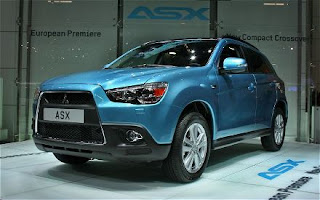
Nissan CEO Carlos Ghosn unveiled the company’s all-new Micra today at the 2010 Geneva motor show. Although the Micra itself will not be coming to America, it is built on an all-new global small-car platform known within Nissan as the V-platform.
“This new platform changes everything,” boasted Ghosn during the press conference. “Our next compact cars are in the pipeline. In the past, Nissan had a minimal presence in the compact segment because we did not have a specific platform suited for those customers’ needs. Now we will be able to compete, and at the highest level. Our new lineup of compact cars will help to increase Nissan’s global market presence from 80% today to 94% in 2012.”
Versatility is the key to Nissan’s small-car strategy -- and, for that matter, the V-platform itself. The architecture will spawn at least three different products for Nissan’s ever-expanding global stage, and will be built in four plants spread around the globe: India, Thailand, China, and Mexico. That pretty much tells you all you need to know about where Nissan hopes to sell small cars. Indeed, Nissan sources confirm that each of these four plants will be fed by a locally-sourced supply chain that will keep production simple and cheap, crucial factors for profitability in the razor-thin profit margins that small cars command.
Nissan won’t continue building the Micra in England, but Europe continues to be an important market for its subcompact offering. Nissan also released details pertaining to the European-spec car today, which will ultimately reach dealers later this fall.
Cosmetically, the new Micra is less radical than the outgoing model, eschewing the “bubble-on-bubble” aestethic in favor of a rounded, more conservative look. The interior is similarly rounded, and shares many parts (the door pulls, steering wheel, and climate controls, for instance) with the Cube.
Standard in each Euro-spec Micra is a 80-hp, 1.2-liter inline three-cylinder engine, mated either through a five-speed manual gearbox or Nissan’s (seemingly omnipresent) continually-variable transmission. If that isn’t enough power, a supercharged form of the same engine will also be available, producing just under 100 hp. More importantly, the supercharged engine is fitted with a stop/start system, allowing it to produce only 95 grams of carbon dioxide for each kilometer driven.
What engines will we get? Perhaps a better question is what car will we receive? Our sources within Nissan aren’t saying, but they confirm that we will get some version of the Micra for America, but with completely different styling. One assumes that the handsome little Micra would be deemed too similar to our existing Versa. But the Versa is so boring, we’d be happy if the Micra just replaced it, quite frankly.



 The ASX also packs a number of green features including low rolling-resistance tires, regenerative braking and auto stop/start technology. All together, Mitsubishi says these features will help the ASX 41 mpg on the European Urban Cycle, 49 mpg on the European Extra-Urban Cycle and 34 mpg on the European Combined Cycle. Also helping is a relatively low curb weight of 3300 pounds for two-wheel-drive models and 3400 for Electronic All-Wheel-Drive models.
The ASX also packs a number of green features including low rolling-resistance tires, regenerative braking and auto stop/start technology. All together, Mitsubishi says these features will help the ASX 41 mpg on the European Urban Cycle, 49 mpg on the European Extra-Urban Cycle and 34 mpg on the European Combined Cycle. Also helping is a relatively low curb weight of 3300 pounds for two-wheel-drive models and 3400 for Electronic All-Wheel-Drive models.











































